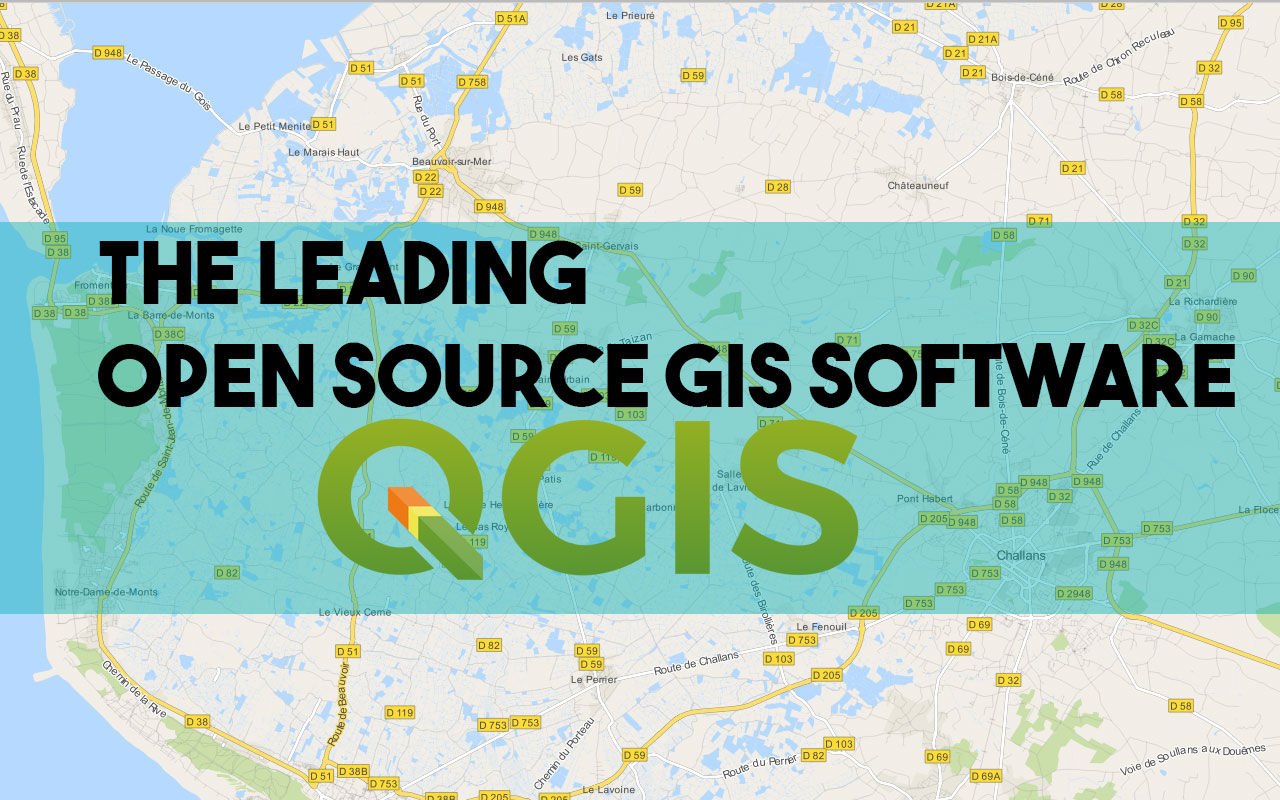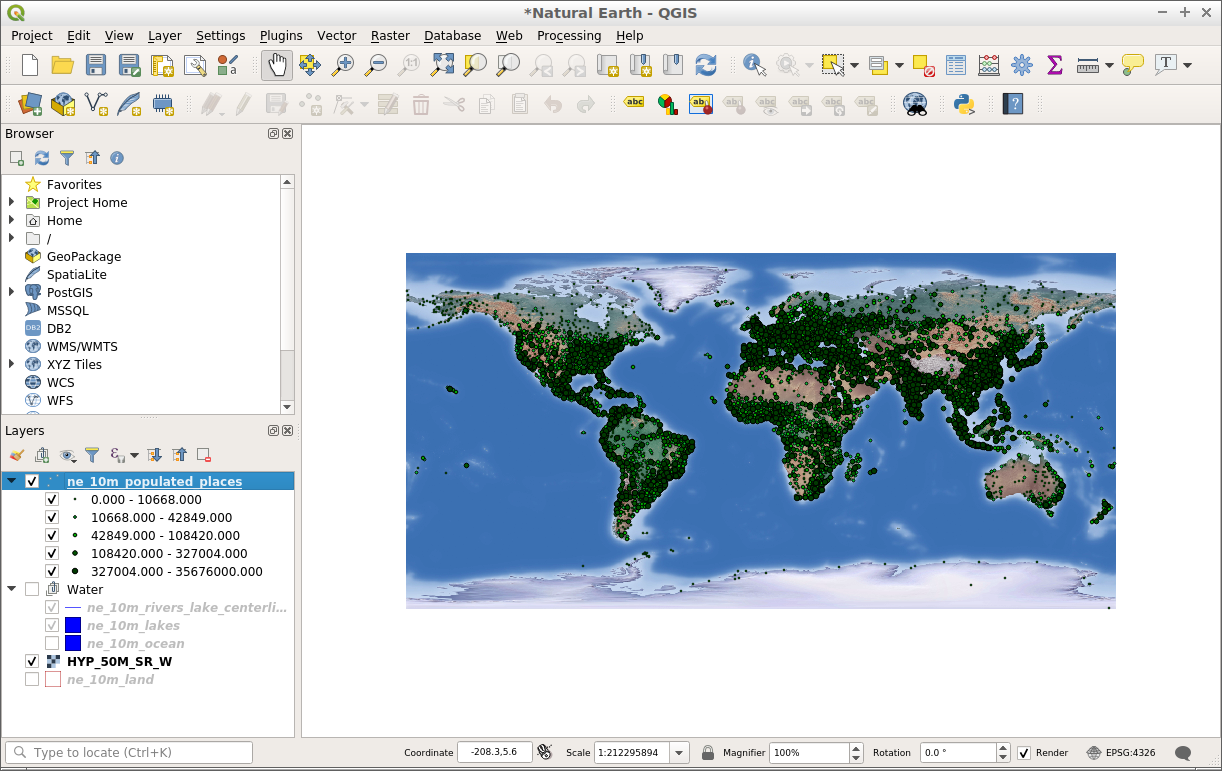QGIS is the leading Free and Open Source Desktop GIS. It allows you to create, edit, visualise, analyse and publish geospatial information on Windows, Mac OS, Linux, BSD and Android (via the QField app). We also provide an OGC Web Server application, a web browser client and developer libraries. Runs on Mac OSX, Windows, Linux. QGIS (previously known as Quantum GIS) is a Free and Open Source Software (FOSS) that runs on the contributions of community members. Download Documentation. Keep in mind that the QGIS software itself does not contain all the tools needed to create and analyze geospatial data. Download Quantum GIS - Take advantage of the large variety of advanced tools put at your disposal in order to create maps from scratch or edit existing ones. Quantum GIS 2.8.1 is a third party application that provides additional functionality to OS X system and enjoys a popularity among Mac users. However, instead of installing it by dragging its icon to the Application folder, uninstalling Quantum GIS 2.8.1 may need you to.
QGIS is a professional GIS application and developer platform. QGIS is built on top of and proud to be itself Free and Open Source Software.
QGIS Desktop: Powerful desktop GIS software to create, edit, visualise, analyse and publish geospatial information.
QGIS Server & Web Client: Publish your QGIS projects and layers as OGC compatible WMS and WFS services.
QGIS runs on Linux, Unix, Mac OS and Windows and supports numerous vector, raster, and database formats and functionalities.


Key Features
QGIS provides a continuously growing number of capabilities provided by core functions and plugins.
You can visualize, manage, edit, analyse data, and design maps.
Interoperability: support for numerous file formats and databases as well as web services.
Customizability: freedom to tailor the application to your needs, from custom data input forms to personalized user interfaces and workflows.
Extensibility: a C++ core and Python support provide the framework for everything from quick scripts to novel stand-alone applications based on the QGIS API.
QGIS Community
QGIS is developed by a team of dedicated volunteers and organisations. We strive to be a welcoming community for people of all race, creed, gender and walks of life.
QGIS users are found in various fields, including: government, education, planning, engineering, NGOs, military and research.
User Groups are regional organizations that run user meetings, provide a platform for common interestes and coordinate development, taking into account regional/national standards and requirements.
Developer meetings are a great opportunity to meet community members in person.
International

QGIS is a world-wide community. We are proud of our international team which enables us to provide an application that is translated into dozens of languages.
The number of regional user groups is constantly growing. User groups can be found on all continents. This means that both community as well as professional commercial support options are available world-wide.
Implemented Standards
- Catalogue Service for the Web (CSW)
- Web Coverage Service (WCS)
- Web Feature Service (WFS)
- Web Feature Service - Transactional (WFS-T)
- Web Map Service (WMS)
For users looking to run complex spatial processes, analyze remotely sensed imagery, edit geospatial data, and make customized maps, desktop software can provide extra processing power above and beyond web-based tools.
Esri ArcGIS Desktop Software
Quantum Gis Download Mac Software
ArcMap
ArcGIS Pro
Esri Desktop GIS Apps
Free Desktop GIS Software
QGIS
GRASS GIS
Desktop GIS Apps
Other Free Software
Data Integration
Data Visualization
Structure-from-Motion (SfM) and Point Processing
ArcMap and ArcGIS Pro are the two main programs in the Esri ArcGIS Desktop suite. Users can install both of these programs on their machines and run them simultaneously.
Members of the UMass community have access to Esri products through a site license administered by the Department of Geosciences. For all questions related to licensing, please contact the ESRI / GIS Software and License Coordinator, Joe Kopera (jkopera@geo.umass.edu).
Do you want to run ArcGIS in the cloud?
ArcGIS can be run on a “virtual machine” via an internet browser or a Remote Desktop app that you install on your computer. This option requires a UMass NetID. To get started, visit campus IT’s website about Windows Virtual Desktop and how to access files using OneDrive. After logging in to the virtual machine, users can launch ArcMap, ArcGIS Pro, or UMass Classroom (to access other Windows software).If you prefer a customizable solution, you can build your own virtual machine on Amazon Web Services. Students can enroll in the AWS Educate program using their UMass email address and get $100 in credit to run a virtual machine. For detailed step-by-step instructions, download the AWS Tutorial for GIS (pdf).
MoreDo you want to run ArcGIS on a Mac?
Step 1: Check that your computer meets the recommended specifications: quad-core Intel processor, 8 GB RAM or better, and 128 GB storage.Step 2: Purchase a full version of Windows to install on your computer. UMass students enrolled in a STEM class qualify for a free copy through Azure Dev Tools for Teaching.
Step 3: Choose your Windows installation method. Option A:Boot Camp is a free option that divides the hard drive into a dual-boot setup, allowing you choose either the Windows or the Mac drive at startup. Option B: Virtualization software allows you to run Windows within an application window. This is more resource-intensive but allows you to access your main hard drive while running Windows. Parallels Desktop 15 for Mac is $39.99 through the OnTheHub Web Store.VMware Fusion 11.5 is $79.99 for the standard license and $95.99 (with education discount) for the Pro license.
Step 4: Install ArcGIS following the instructions below.
MoreArcMap
Runs on Windows only. ArcMap is a commercial GIS software available through the UMass site license. It has been the main Esri product for the past several years, but is now in the process of being phased out and replaced by ArcGIS Pro.
The current version available through UMass is ArcMap 10.7.
How to Install
Quantum Gis Download Free
To download ArcMap software and access step-by-step instructions for installing and licensing the software, visit this page: https://www.geo.umass.edu/arcgis.
ArcGIS Pro
Runs on Windows only. ArcGIS Pro is Esri’s newest commercial desktop software, featuring a new ribbon interface and 2D/3D integration.
The current version available through UMass is ArcGIS Pro 2.5.
How to Install
To download ArcGIS Pro software and access step-by-step instructions for launching the program, visit this page: https://www.geo.umass.edu/arcgis.
Quick Launch Steps
- After installation, launch the application. Click Sign in in the top right corner of the window.
- At the login page, click: Sign in with Enterprise Login.
- Type umass-amherst into the text box.
- Click Sign in to University of Massachusetts-Amherst using UMASS-AMHERST
- Enter your UMass credentials to login.
Esri Desktop Apps

ArcGIS Maps for Office (only works in Windows)
Add-on to the Microsoft Office suite that allows users to generate maps directly from Excel and share the results to PowerPoint. To run, ArcGIS Desktop must be installed on your computer.
ArcGIS Maps for Adobe Creative Cloud (requires Adobe CC to be installed already)
Add-on to the Adobe Creative Cloud suite that allows users to craft aesthetically pleasing maps directly from Photoshop or Illustrator. Requires signing in via the ArcGIS Online option – see instructions under ArcGIS Pro above.
QGIS
Runs on Mac OSX, Windows, Linux. QGIS (previously known as Quantum GIS) is a Free and Open Source Software (FOSS) that runs on the contributions of community members.
Download
Documentation
Keep in mind that the QGIS software itself does not contain all the tools needed to create and analyze geospatial data. Instead, users need to install plugins developed by the user community to fulfill these tasks. Plugins are free to download and install directly from the QGIS Plugin Manager within the QGIS application.
Search for QGIS plugins
Plugins Documentation
GRASS GIS
Runs on Mac OSX, Windows, Linux. GRASS GIS, commonly referred to as GRASS (Geographic Resources Analysis Support System), is a Free and Open Source Software (FOSS) software suite used for geospatial data management and analysis, image processing, graphics and maps production, spatial modeling, and visualization. GRASS GIS is currently used in academic and commercial settings around the world, as well as by many governmental agencies and environmental consulting companies.
Quantum Gis Download Mac Download
Download
Documentation
Free Desktop GIS Apps
Google Earth Pro
Free desktop software that allows you to explore worldwide satellite imagery. Users also have access to historical satellite imagery, Street View imagery, guided tours, measuring tools (distance and area), and viewshed tools.
GeoDa
Free and open source software for exploring and modeling spatial patterns.
CrimeStat(only works in Windows)
Spatial statistics program for analyzing crime incident locations.
Data Integration
Data integration platforms allow users to combine multiple datasets and workflows into an automated process. It is useful for people doing repetitive tasks that involve different platforms (like GIS, database software, PDF viewers, etc.).
FME
FME is an easy-to-use platform for integrating and transforming data. Potential applications include automating Python scripts, integrating R scripts, object detection in remotely sensed imagery with computer vision, and rendering AR/VR data. Free licenses are available for students, instructors, and recent graduates.
Data Visualization
Data visualization software generates charts, graphs, and maps that help people see data in new ways. It is particularly helpful for exploring patterns and trends in data, as well as for producing images for presentations and publications.
Gephi
Open-source analysis and visualization software for graphs and networks. Use for exploratory data analysis, social network analysis, and map creation.
ParaView
Open-source analysis and visualization software, designed for analyzing very large datasets. Great for researchers looking to develop interactive visualizations, animations, and web applications.
Tableau Public
Free version of Tableau. Use for basic visualization and exploratory data analysis. Works with Excel or .CSV spreadsheets.
Structure-from-Motion (SfM) and Point Processing
Structure-from-Motion (SfM), or photogrammetry, generates a digital model of an object from a collection of photographs. SfM is commonly used with unmanned aerial vehicles (UAVs, or drones) to model landscapes or large built features. It can also be used to model smaller objects, like museum artifacts.
CloudCompare
Free 3D point cloud and mesh processing software.
OpenDroneMap
Suite of tools for creating point clouds, 3D models, and DEMs from drone imagery.
Regard3D
Free and open source software for building point clouds and 3D models of objects (best for small projects only).
VisualSFM
Free software for building point clouds from any collection of photographs.
For Advanced Users
OpenSFM
Open-source library for command-line processing.
